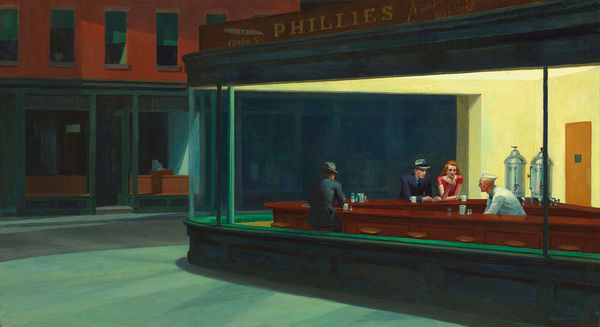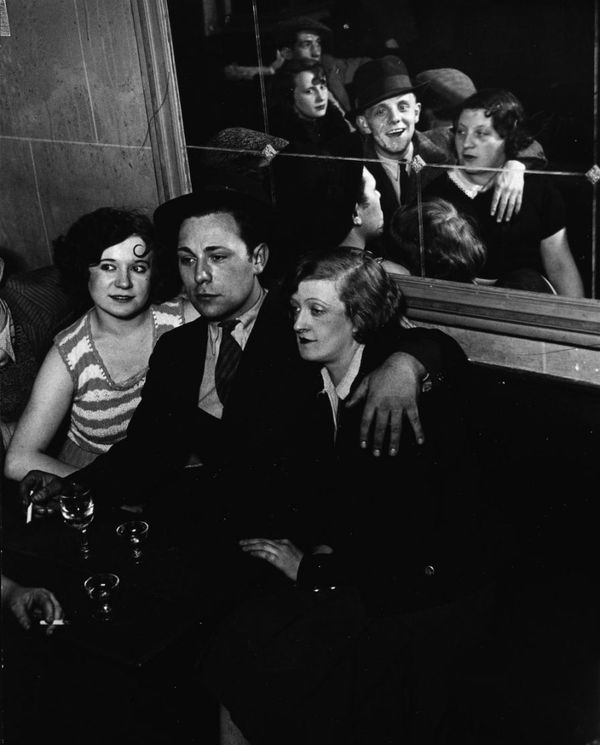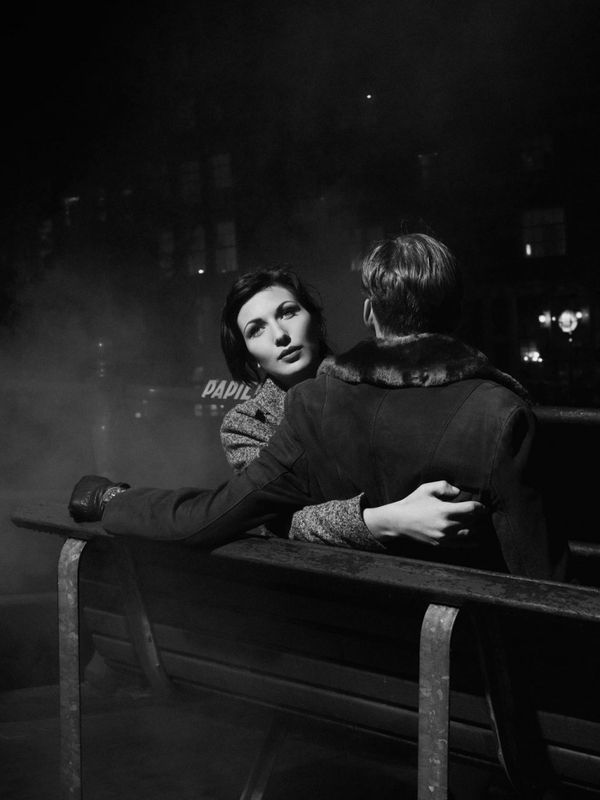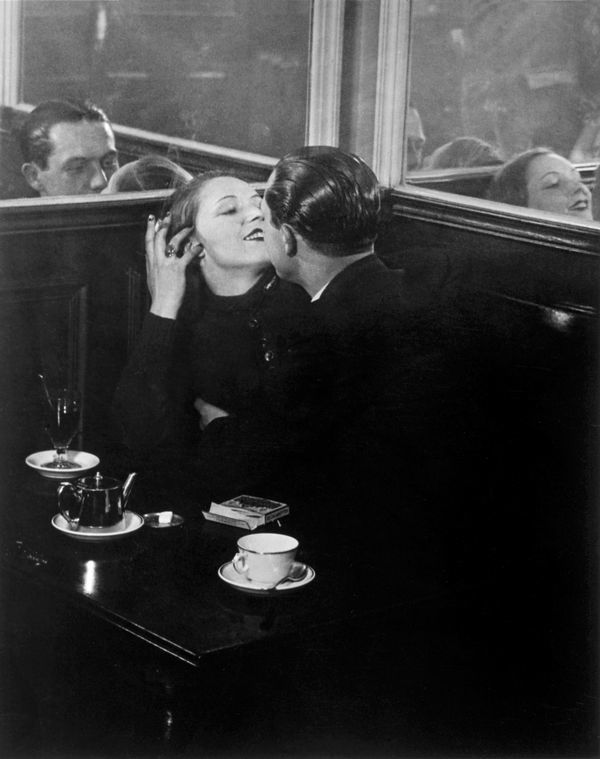Monthly Masters' Critique - September 2016 - "Nighthawks"
Sep 1, 2016 08:46:48 #
Does art influence photography?
"Nighthawks" is a 1942 painting by Edward Hopper that portrays people sitting in a downtown diner late at night. It is Hopper's most famous work and is one of the most recognizable paintings in American art. Within months of its completion, it was sold to the Art Institute of Chicago for $3,000, and has remained there ever since. Hopper said that "Nighthawks" was inspired by a restaurant on New York's Greenwich Avenue where two streets meet, but the image, with its carefully constructed composition and lack of narrative, has been said to have a timeless, universal quality that transcends its particular locale.
Fraenkel Gallery's 2009 book Edward Hopper and Company takes a look at Hopper's influence on photography. Jeffrey Fraenkel writes in the introduction: Edward Hopper's relevance to American photography becomes clearer with each passing decade. His respect for humble subjects, his interest in the psychological, his depth as a landscape artist, and his astonishing sensitivity to color as a means of communicating feeling, are only some of the elements that may have led the writer Geoff Dyer to theorize that Hopper 'could claim to be the most influential American photographer of the twentieth century, even though he didn't take any photographs.' The book compares 10 of Hopper's works with carefully selected photographs of eight masters: Adams, Friedlander, Evans, Arbus, Callahan, Eggleston, Frank and Shore. The book looks like it would make an interesting read but it's too pricey for most of us to acquire, so in this thread, we'll ask YOU:
What do you think? Can a case be made for Hopper's influence on modern photography? Or did the painter simply share an aesthetic, a culture and history with the photographers that worked in his era and after?
As you consider Hopper's influence, please share your impressions of this art work:
-What works or doesn't work in this painting? Light, Moment, Composition, Subject?
-Does the painting have impact? Why or why not?
-Does the painting tell a story?
-Is it an artwork you'd enjoy owning and displaying? Why or why not?
-Are there photographs you admire which illustrate your points? Feel free to add links to photographs that illustrate your points, or even upload one of your own that you feel may have been inspired by this kind of art.
Here's some interesting reference material about Hopper and "Nighthawks":
http://en.wikipedia.org/wiki/Nighthawks
http://www.edwardhopper.net/nighthawks.jsp
http://www.theguardian.com/artanddesign/2004/may/08/art
http://www.khanacademy.org/humanities/art-1010/art-between-wars/american-art-wwii/a/hopper-nighthawks
http://www.artic.edu/aic/collections/artwork/111628
http://mentalfloss.com/article/63967/15-things-you-might-not-know-about-nighthawks
http://www.npr.org/sections/pictureshow/2009/07/edward_hoppers_influence.html
http://petapixel.com/2014/01/14/interview-richard-tuschman-photographer-behind-hopper-meditations/
"Nighthawks" is a 1942 painting by Edward Hopper that portrays people sitting in a downtown diner late at night. It is Hopper's most famous work and is one of the most recognizable paintings in American art. Within months of its completion, it was sold to the Art Institute of Chicago for $3,000, and has remained there ever since. Hopper said that "Nighthawks" was inspired by a restaurant on New York's Greenwich Avenue where two streets meet, but the image, with its carefully constructed composition and lack of narrative, has been said to have a timeless, universal quality that transcends its particular locale.
Fraenkel Gallery's 2009 book Edward Hopper and Company takes a look at Hopper's influence on photography. Jeffrey Fraenkel writes in the introduction: Edward Hopper's relevance to American photography becomes clearer with each passing decade. His respect for humble subjects, his interest in the psychological, his depth as a landscape artist, and his astonishing sensitivity to color as a means of communicating feeling, are only some of the elements that may have led the writer Geoff Dyer to theorize that Hopper 'could claim to be the most influential American photographer of the twentieth century, even though he didn't take any photographs.' The book compares 10 of Hopper's works with carefully selected photographs of eight masters: Adams, Friedlander, Evans, Arbus, Callahan, Eggleston, Frank and Shore. The book looks like it would make an interesting read but it's too pricey for most of us to acquire, so in this thread, we'll ask YOU:
What do you think? Can a case be made for Hopper's influence on modern photography? Or did the painter simply share an aesthetic, a culture and history with the photographers that worked in his era and after?
As you consider Hopper's influence, please share your impressions of this art work:
-What works or doesn't work in this painting? Light, Moment, Composition, Subject?
-Does the painting have impact? Why or why not?
-Does the painting tell a story?
-Is it an artwork you'd enjoy owning and displaying? Why or why not?
-Are there photographs you admire which illustrate your points? Feel free to add links to photographs that illustrate your points, or even upload one of your own that you feel may have been inspired by this kind of art.
Here's some interesting reference material about Hopper and "Nighthawks":
http://en.wikipedia.org/wiki/Nighthawks
http://www.edwardhopper.net/nighthawks.jsp
http://www.theguardian.com/artanddesign/2004/may/08/art
http://www.khanacademy.org/humanities/art-1010/art-between-wars/american-art-wwii/a/hopper-nighthawks
http://www.artic.edu/aic/collections/artwork/111628
http://mentalfloss.com/article/63967/15-things-you-might-not-know-about-nighthawks
http://www.npr.org/sections/pictureshow/2009/07/edward_hoppers_influence.html
http://petapixel.com/2014/01/14/interview-richard-tuschman-photographer-behind-hopper-meditations/
Sep 1, 2016 10:19:17 #
Frank2013
Loc: San Antonio, TX. & Milwaukee, WI.
I think all things have the ability to influence all other things....to what extent depends on how many experienced it and gave it thought.
As for all your other questions I would say a basic yes. It’s what has made it famous.
As for all your other questions I would say a basic yes. It’s what has made it famous.
Sep 1, 2016 10:43:22 #
I find much about this image unsettling. The woman is ensuring her manicure is still good. They drink coffee and discuss whatever it is that they are concerned with. The man in white joins in the conversation - perhaps about why he is not yet at war (this is 1942). The lights are on, but the streets are empty - perhaps not dark but in shade. The image is pensive - a moment of calm - but there is fear.
I love the yellow wall and how it intersects with the darkness behind. And the colors - the blues (cools), browns (warms) and center stage, the red woman. Exactly where darkness and light meets, we have three in conversation, and a fourth not part of the conversation, but perhaps interested, off to the side. Definitely a story of composition and mood and loneliness in what I would have expected to be a loud, bustling place.
Edit - there is also a story of togetherness here. Time is passing - more slowly than in today's world, they talk to each other - with each other. Something missing today, which perhaps is a factor in it's appeal. This is not the age of the cell phone.
I love the yellow wall and how it intersects with the darkness behind. And the colors - the blues (cools), browns (warms) and center stage, the red woman. Exactly where darkness and light meets, we have three in conversation, and a fourth not part of the conversation, but perhaps interested, off to the side. Definitely a story of composition and mood and loneliness in what I would have expected to be a loud, bustling place.
Edit - there is also a story of togetherness here. Time is passing - more slowly than in today's world, they talk to each other - with each other. Something missing today, which perhaps is a factor in it's appeal. This is not the age of the cell phone.
Sep 1, 2016 11:53:56 #
Frank2013 wrote:
I think all things have the ability to influence all other things....to what extent depends on how many experienced it and gave it thought.
As for all your other questions I would say a basic yes. It’s what has made it famous.
As for all your other questions I would say a basic yes. It’s what has made it famous.
Thanks for dropping by Frank. It is one of the most recognizable of modern American paintings.
Sep 1, 2016 11:55:25 #
pfrancke wrote:
I find much about this image unsettling. The woma... (show quote)
The isolation within the busy city environment - something that we often try to capture in street photography?
Together yet alone?
Interesting points you have raised.
Sep 1, 2016 11:56:32 #
An alternate,and, IMO, more accurate interpretation is that Hopper was influenced by the street photography of Brassai, Cartier-Bresson, and others, rather than the other way-round.
Dave
Dave
Sep 1, 2016 12:02:58 #
minniev wrote:
Does art influence photography? ... Can a case be made for Hopper's influence on modern photography? ...
It would be a stretch but I am sure lots of people would or have argued it.
For starters, the work is reminiscent of films and cartoons of that era that were contemporaneously influencing all of the arts including film noir, painting, photography and even literature. Hopper was just a part of the mix.
This particular image has been imitated so much, particularly in advertising, that it has become very recognizable. It's difficult to separate the iconic from the cliche.
Sep 1, 2016 12:07:36 #
Uuglypher wrote:
An alternate,and, IMO, more accurate interpretation is that Hopper was influenced by the street photography of Brassai, Cartier-Bresson, and others, rather than the other way-round.
Dave
Dave
That is an interesting perspective, Dave, and certainly another possibility.
Sep 1, 2016 12:11:10 #
selmslie wrote:
It would be a stretch but I am sure lots of people would or have argued it.
For starters, the work is reminiscent of films and cartoons of that era that were contemporaneously influencing all of the arts including film noir, painting, photography and even literature. Hopper was just a part of the mix.
This particular image has been imitated so much, particularly in advertising, that it has become very recognizable. It's difficult to separate the iconic from the cliche.
For starters, the work is reminiscent of films and cartoons of that era that were contemporaneously influencing all of the arts including film noir, painting, photography and even literature. Hopper was just a part of the mix.
This particular image has been imitated so much, particularly in advertising, that it has become very recognizable. It's difficult to separate the iconic from the cliche.
It is very hard to trace the trail of influence from this end, of course. That is why we always link plenty of resources, in case anyone wants to pursue some additional information or opinions of others to begin to separate those two.
Do feel free to link additional resources for these interesting ideas.
Sep 1, 2016 12:32:32 #
Some other, earlier, images of "Nighthawks" (by "Brassai")
Dave
Dave
Sep 1, 2016 13:14:51 #
minniev wrote:
It is very hard to trace the trail of influence from this end, of course. ...
Almost impossible unless an artist acknowledges it like, "I was influenced by X." Anything more would be speculation. How many artists would admit that their art is derivative?
You could compare similarities between X and Y but they might easily be accidental.
Sep 1, 2016 20:57:34 #
Uuglypher wrote:
Some other, earlier, images of "Nighthawks" (by "Brassai")
Dave
Dave
Thank you Dave for posting these examples to support your thoughts on the matter.
I can see the correlation.
Sep 2, 2016 09:49:42 #
Caribou
Loc: St. Louis, MO
I'm not at all sophisticated about art. I just like what I like. I think all art is a way we have of communicating with each other on some higher level and we can over-analyze it. I've read critiques of Hopper's work that used terms that I didn't understand and which made no sense at all. I simply like a lot of Hopper's work. With the lighting and his subjects he creates a mood. Sometimes it is solitude; sometimes loneliness or reflection. I will admit to trying to capture that sort of lighting or mood in some photographs I have taken. I haven't been successful.
There are some other Hopper paintings that I like because there is something about about them that fascinates me. Two of several examples: "New York Movie, 1939" (I love the setting and I wonder what she is thinking about) and "7 a.m.Sunday 1948". I like "Nighthawks" because of the mood and the atmosphere. You can read all sorts of things into the lives of the people there. Plus I like work that depicts that era. I've always been captivated by the 1930s and 40s.
There are some other Hopper paintings that I like because there is something about about them that fascinates me. Two of several examples: "New York Movie, 1939" (I love the setting and I wonder what she is thinking about) and "7 a.m.Sunday 1948". I like "Nighthawks" because of the mood and the atmosphere. You can read all sorts of things into the lives of the people there. Plus I like work that depicts that era. I've always been captivated by the 1930s and 40s.
Sep 2, 2016 09:57:31 #
Caribou wrote:
I'm not at all sophisticated about art. I just lik... (show quote)
Thank you for an honest and very refreshing review, proving that extensive experience with art history isn't necessary to form a studied opinion. Your points about the lighting and mood are well taken and well expressed.
BTW welcome to FYC, and hope you'll hang around!
Sep 2, 2016 13:32:12 #
I've always been fascinated with Hoppers paintings, especially ones containing people, they seem to convey a feeling of loneliness, but not despair. The whole decade of the 30's
And through WWII was a period of great change.
Here's one I posted back in April, I love the colors inside this small restaurant I was able to capture through the window from the narrow sidewalk. Regretfully I couldn't get further away due to the busy street.
The atmosphere inside is decidedly more upbeat than Hoppers painting.
http://static.uglyhedgehog.com/upload/2016/4/13/1460601119023-outside_looking_in.jpg
And through WWII was a period of great change.
Here's one I posted back in April, I love the colors inside this small restaurant I was able to capture through the window from the narrow sidewalk. Regretfully I couldn't get further away due to the busy street.
The atmosphere inside is decidedly more upbeat than Hoppers painting.
http://static.uglyhedgehog.com/upload/2016/4/13/1460601119023-outside_looking_in.jpg
If you want to reply, then register here. Registration is free and your account is created instantly, so you can post right away.







